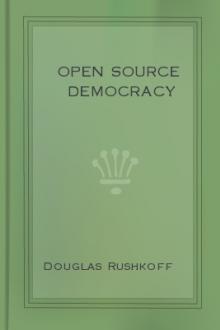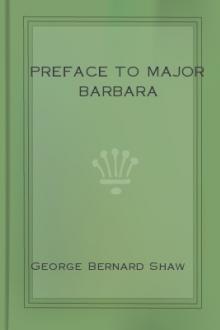The Fifteen Decisive Battles of the World from Marathon to Waterloo, Edward Creasy [simple e reader TXT] 📗

- Author: Edward Creasy
- Performer: -
Book online «The Fifteen Decisive Battles of the World from Marathon to Waterloo, Edward Creasy [simple e reader TXT] 📗». Author Edward Creasy
It was approaching noon before the action commenced. Napoleon, in his Memoirs, gives as the reason for this delay, the miry state of the ground through the heavy rain of the preceding night and day, which rendered it impossible for cavalry or artillery to manoeuvre on it till a few hours of dry weather had given it its natural consistency. It has been supposed, also, that he trusted to the effect which the sight of the imposing array of his own forces was likely to produce on the part of the allied army. The Belgian regiments had been tampered with; and Napoleon had well-
founded hopes of seeing them quit the Duke of Wellington in a body, and range themselves under his own eagles. The Duke, however, who knew and did not trust them, had guarded against the risk of this, by breaking up the corps of Belgians, and distributing them in separate regiments among troops on whom he could rely. [Siborne, vol. i. p. 373.]
At last, at about half-past eleven o’clock, Napoleon began the battle by directing a powerful force from his left wing under his brother, Prince Jerome, to attack Hougoumont. Column after column of the French now descended from the west of the southern heights, and assailed that post with fiery valour, which was encountered with the most determined bravery. The French won the copse round the house, but a party of the British Guards held the house itself throughout the day. The whole of Byng’s brigade was required to man this hotly-contested post. Amid shell and shot, and the blazing fragments of part of the buildings, this obstinate contest was continued. But still the English were firm in Hougoumont; though the French occasionally moved forward in such numbers as enabled them to surround and mask it with part of their troops from their left wing, while others pressed onward up the slope, and assailed the British right.
The cannonade, which commenced at first between the British right and the French left, in consequence of the attack on Hougoumont, soon became general along both lines; and about one o’clock, Napoleon directed a grand attack to be made under Marshal Ney upon the centre and left wing of the allied army. For this purpose four columns of infantry, amounting to about eighteen thousand men, were collected, supported by a strong division of cavalry under the celebrated Kellerman; and seventy-four guns were brought forward ready to be posted on the ridge of a little undulation of the ground in the interval between the two principal chains of heights, so as to bring their fire to bear on the Duke’s line at a range of about seven hundred yards. By the combined assault of these formidable forces, led on by Ney, “the bravest of the brave,” Napoleon hoped to force the left centre of the British position, to take La Haye Sainte, and then pressing forward, to occupy also the farm of Mont St. Jean. He then could cut the mass of Wellington’s troops off from their line of retreat upon Brussels, and from their own left, and also completely sever them from any Prussian troops that might be approaching.
The columns destined for this great and decisive operation descended majestically from the French line of hills, and gained the ridge of the intervening eminence, on which the batteries that supported them were now ranged. As the columns descended again from this eminence, the seventy-four guns opened over their heads with terrible effect upon the troops of the Allies that were stationed on the heights to the left of the Charleroi road.
One of the French columns kept to the east, and attacked the extreme left of the Allies; the other three continued to move rapidly forwards upon the left centre of the allied position.
The front line of the Allies here was composed of Bylandt’s brigade of Dutch and Belgians. As the French columns moved up the southward slope of the height on which the Dutch and Belgians stood, and the skirmishers in advance began to open their fire, Bylandt’s entire brigade turned and fled in disgraceful and disorderly panic; but there were men more worthy of the name behind.
In this part of-the second line of the Allies were posted Pack and Kempt’s brigades of English infantry, which had suffered severely at Quatre Bras. But Picton was here as general of division, and not even Ney himself surpassed in resolute bravery that stern and fiery spirit. Picton brought his two brigades forward, side by side, in a thin, two-deep line. Thus joined together, they were not three thousand strong. With these Picton had to make head against the three victorious French columns, upwards of four times that strength, and who, encouraged by the easy rout of the Dutch and Belgians, now came confidently over the ridge of the hill. The British infantry stood firm; and as the French halted and began to deploy into line, Picton seized the critical moment. He shouted in his stentorian voice to Kempt’s brigade: “A volley, and then charge!” At a distance of less than thirty yards that volley was poured upon the devoted first sections of the nearest column; and then, with a fierce hurrah, the British dashed in with the bayonet. Picton was shot dead as he rushed forward, but his men pushed on with the cold steel. The French reeled back in confusion. Pack’s infantry had checked the other two columns and down came a whirlwind of British horse on the whole mass, sending them staggering from the crest of the hill, and cutting them down by whole battalions.
Ponsonby’s brigade of heavy cavalry (the Union Brigade as it was called, from its being made up of the British Royals, the Scots Greys, and the Irish Inniskillings), did this good service. On went the horsemen amid the wrecks of the French columns, capturing two eagles, and two thousand prisoners; onwards still they galloped, and sabred the artillerymen of Ney’s seventy-four advanced guns; then severing the traces, and cutting the throats of the artillery horses, they rendered these guns totally useless to the French throughout the remainder of the day. While thus far advanced beyond the British position and disordered by success, they were charged by a large body of French lancers, and driven back with severe loss, till Vandeleur’s Light horse came to their aid, and beat off the French lancers in their turn.
Equally unsuccessful with the advance of the French infantry in this grand attack, had been the efforts of the French cavalry who moved forward in support of it, along the east of the Charleroi road. Somerset’s cavalry of the English Household Brigade had been launched, on the right of Picton’s division, against the French horse, at the same time that the English Union Brigade of heavy horse charged the French infantry columns on the left.
Somerset’s brigade was formed of the Life Guards, the Blues, and the Dragoon Guards. The hostile cavalry, which Kellerman led forward, consisted chiefly of Cuirassiers. This steel-clad mass of French horsemen rode down some companies of German infantry, near La Haye Sainte, and flushed with success, they bounded onward to the ridge of the British position. The English Household Brigade, led on by the Earl of Uxbridge in person, spurred forward to the encounter, and in an instant, the two adverse lines of strong swordsmen, on their strong steeds, dashed furiously together. A desperate and sanguinary hand-to-hand fight ensued, in which the physical superiority of the Anglo-
Saxons, guided by equal skill, and animated with equal valour, was made decisively manifest. Back went the chosen cavalry of France; and after them, in hot pursuit, spurred the English Guards. They went forward as far and as fiercely as their comrades of the Union Brigade; and, like them, the Household cavalry suffered severely before they regained the British position, after their magnificent charge and adventurous pursuit.
Napoleon’s grand effort to break the English left centre had thus completely failed; and his right wing was seriously weakened by the heavy loss which it had sustained. Hougoumont was still being assailed, and was still successfully resisting. Troops were now beginning to appear at the edge of the horizon on Napoleon’s right, which he too well knew to be Prussian, though he endeavoured to persuade his followers that they were Grouchy’s men coming to their aid.
Grouchy was in fact now engaged at Wavre with his whole force, against Thielmam’s single Prussian corps, while the other three corps of the Prussian army were moving without opposition, save from the difficulties of the ground, upon Waterloo. Grouchy believed, on the 17th, and caused Napoleon to believe, that the Prussian army was retreating by lines of march remote from Waterloo upon Namur and Maestricht. Napoleon learned only on the 18th, that there were Prussians in Wavre, and felt jealous about the security of his own right. He accordingly, before he attacked the English, sent Grouchy orders to engage the Prussians at Wavre without delay, AND TO APPROACH THE MAIN FRENCH ARMY, SO
AS TO UNITE HIS COMMUNICATIONS WITH THE EMPEROR’S. Grouchy entirely neglected this last part of his instructions; and in attacking the Prussians whom he found at Wavre, he spread his force more and more towards his right, that is to say, in the direction most remote from Napoleon. He thus knew nothing of Blucher’s and Bulow’s flank march upon Waterloo, till six in the evening of the 18th, when he received a note which Soult by Napoleon’s orders had sent off from the field of battle at Waterloo at one o’clock, to inform Grouchy that Bulow was coming over the heights of St. Lambert, on the Emperor’s right flank, and directing Grouchy to approach and join the main army instantly, and crush Bulow EN FLAGRANT DELIT. It was then too late for Grouchy to obey; but it is remarkable that as early as noon on the 18th, and while Grouchy had not proceeded as far as Wavre, he and his suite heard, the sound of heavy cannonading In the direction of Planchenoit and Mont St. Jean. General Gerard, who was with Grouchy, implored him to march towards the cannonade, and join his operations with those of Napoleon, who was evidently engaged with the English. Grouchy refused to do so, or even to detach part of his force in that direction. He said that his instructions were to fight the Prussians at Wavre.
He marched upon Wavre





Comments (0)